


SCS Engineers’ Gomathy Radhakrishna Iyer explains, “The structure of PFAs is a carbon and fluorine bond, and that bond is considered one of the strongest in nature. For industry, Chlorofluorocarbons (CFC), a volatile derivative of methane, ethane, and propane, creates problems globally after they’ve been released. Chlorofluorocarbons are strong greenhouse gases and are also responsible for the destruction of stratospheric ozone.
The most publicized of these compounds are those used as coolants in refrigeration and air conditioners, as propellants in spray cans and similar products, and as solvents for industrial purposes. Chlorofluorocarbons are far less abundant than carbon dioxide in the atmosphere. Still, they are 10,000 times more potent as a greenhouse gas and can remain in the atmosphere for more than 45 to 100 years. Reference
Iyer continues, “PFAS has the same kind of carbon-fluorine bond as CFC but linked to several C-F bonds like a chain making them even more inert and hard to degrade. Breaking this bond is what makes finding effective leachate treatments challenging, but certainly possible.”
It takes a savvy engineer to design safe and effective systems. We’re very proud of our Young Professionals like Gomathy – they’re smart and continue learning with the guidance of our VEPs – very experienced professionals.
Open positions at SCS Engineers for YPs and VEPs
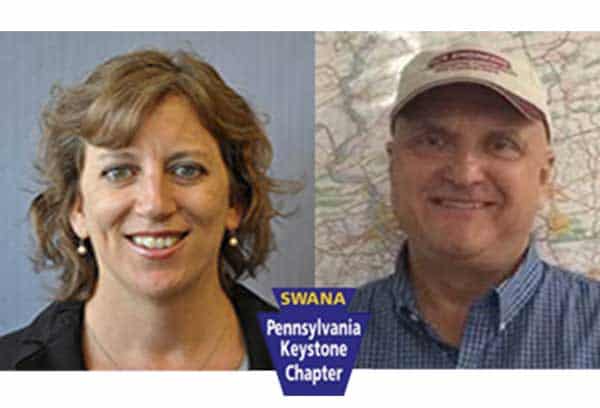
President, Michele Nestor
Vice President, Denise Wessels
Secretary, Tom Lock
Treasurer, Matthew Foltz
Private Sector Directors: Jill Hamill, Carolyn Witwer
Public Sector Directors: Scott McGrath and Scot Sample
Young Professionals Director: Brandon Comer
Chapter International Board Member: Robert Watts
The Solid Waste Association of North America – SWANA organization is comprised of public and private sector professionals committed to advancing solid waste management, safety, and resource management through their shared emphasis on education, advocacy, and research. Keystone SWANA serves industry professionals through technical conferences, certifications, publications, and a large offering of technical training courses which in turn keep our communities and environmental resources healthier.

SWANA is offering educational sessions as a webinar series with CEUs available from August through November. Register for just a few or pay one flat fee to participate in as many as you would like.
This week’s Webinar is on Thursday, October 1 at 10:00 am ET, 1 CEU.
State-of-the industry practices pertaining to the design, construction, operations, monitoring, and data analytics of LFG collection and control systems, as well as investigation of the quantity (mass flux) of fugitive (uncollected) LFG emissions.
Webinar Schedule and Registration
This 1 hour SWANA Training includes topics on Landfill Gas Emissions. Register through the VRA/SWANA Webinar Series. If you’d like to learn more about the services and technologies discussed during this session, try one of these links:

SCS periodically prepares Technical Bulletins to highlight items of interest to our clients and friends who have signed up to receive them. We also publish these on our website at https://www.scsengineers.com/publications/technical-bulletins/.
Our most recent Bulletin summarizes the
This Bulletin provides information on these revisions, as follows:
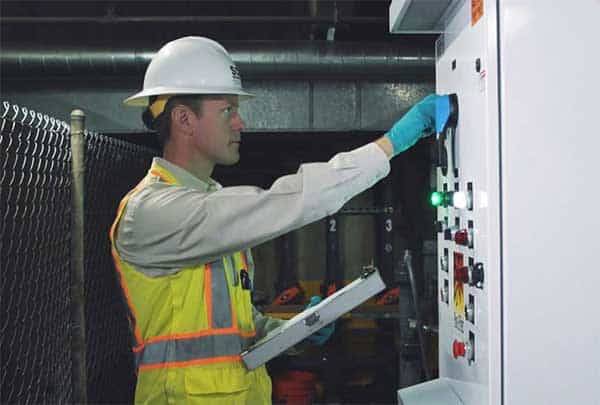
“An ounce of prevention is worth a pound of cure.” We’ve all heard that proverb before, and it’s true – it’s generally easier to stop something from happening than to repair the damage after it has happened.
This is almost always the case when it comes to environmental incidents – it is cheaper to prevent the incident from occurring than paying for the cleanup and impacts the incident caused. Many of SCS’s service areas are specifically focused on prevention and optimization – doing the job in ways that are better, safer, and more protective of human health and the environment.
Environmental insurance is a product that most SCS clients likely have in place in some form to protect their facilities, employees, and neighbors from the harmful impacts of incidents that can introduce contamination into the air, soil, groundwater, or surface water. The types of coverage provided by environmental insurance policies vary in both extent and cost, and many factors, one of which being risk, drive those costs. When an insurance company is underwriting coverage for a new or existing client, the risk associated with that coverage is carefully evaluated. What the client (insured) does, how they do it, their safety record, their history of previous environmental issues, and other factors are all taken into consideration when writing an environmental insurance policy and the associated premium and deductible are determined.
To reduce the up-front costs (the premium) associated with carrying the necessary and appropriate amount of environmental insurance, the insured can do several things. One is to increase their deductible, but in the event of an incident, that could end up costing the insured more on the back end (i.e., costs expended to investigate and remediate an incident). Insureds, their brokers, and the insurers will work closely to balance premium costs and deductibles so that the costs associated with addressing an incident are not detrimental.
An insured shouldn’t reduce the type and amount of coverage – that could put them in a bad financial (and legal!) position. A more prudent choice, one that has many potential positive aspects and makes sound business sense, is reducing risk and therefore the costs associated with an environmental insurance policy that is based on coverage and risk.
SCS Engineers develops proprietary remote monitoring and control software for landfills, manufacturing, and industrial facilities called SCS RMC®. The software provides remote real-time viewing, analysis, and control of equipment and systems critical to safe operations and production. A network of sensors and Machine-to-Machine (M2M) applications enable operations teams to be alerted immediately (via cell phones, computers, tablets) of any operational issues that could potentially result in an environmental incident.

The application reduces reaction time, labor costs, and potential associated impacts. In this case, SCS RMC® puts the client’s decision-making in front of a problem rather than reacting to potential aftermaths, proactively reducing the potential environmental risks of their operations.
SCS’s service areas, including those listed here, are particularly focused on providing our clients with assistance in designing, building, and maintaining sustainable solutions, reducing risk, and helping to foresee and adapt to environmental, social, and regulatory changes:
SCS’s professionals are available to assist our clients in their discussions with brokers and insurers regarding how our environmental services and technologies can potentially reduce risks associated with their operations. We do this by providing creative and cost-effective solutions and guidance that can prevent environmental incidents from occurring and reducing the nature and extent of associated impacts.
We can help you select and implement the “ounce of prevention” so that you won’t have to face the “pound of cure.” This will proactively reduce operational risks, which can, in turn, help facilitate the positive brokering of more favorable environmental insurance coverage, premiums, and deductibles.
 About the Author: Michael Schmidt is an accomplished leader with nearly 30 years of progressively-responsible experience in the environmental consulting and environmental insurance industries, with specific experience focusing on the evaluation of environmental risks and liabilities associated with insurance claims and underwriting, site investigation and remediation, due diligence, and project management.
About the Author: Michael Schmidt is an accomplished leader with nearly 30 years of progressively-responsible experience in the environmental consulting and environmental insurance industries, with specific experience focusing on the evaluation of environmental risks and liabilities associated with insurance claims and underwriting, site investigation and remediation, due diligence, and project management.
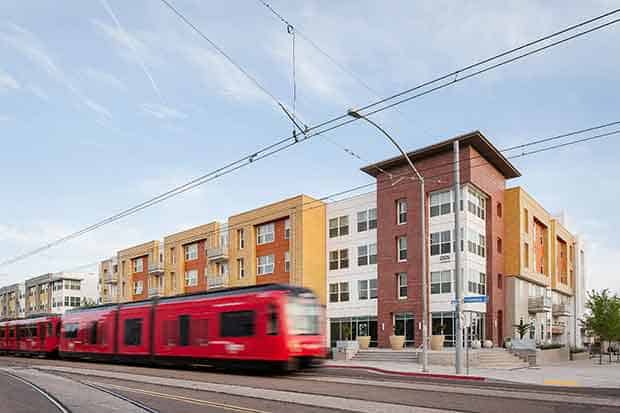
Shown here COMM22, developed by BRIDGE-Housing, is an award-winning mixed-use, mixed-income, transit-oriented development located at Commercial and 22nd streets in San Diego. SCS’s environmental remediation of the property to ensure human health and the environment were protected as cost-effectively as possible enabled the four-phase development project; supporting both the social and business goals of our client and the community.
Local governments and non-profits use Brownfields grants to complete environmental assessments, redevelopment planning, and environmental cleanup. The grant opportunities available now are as follows:
Brownfields Assessment Grant– for Brownfields inventories, environmental assessment, redevelopment planning, and cleanup planning. Funding amounts of $300,000 for community-wide and $600,000 for coalitions.
Brownfields Cleanup Grant– for environmental cleanup of a specific property or properties, currently owned by the applicant. Funding amounts up to $500,000
Brownfields Multi-Purpose Grant-for a range of activities including redevelopment planning, inventories, environmental assessment, and environmental cleanup. Funding amounts up to $800,000.
SCS Engineers has provided grant writing and implementation services for over $10 million in successful Brownfields grant applications including an 80% success rate for first-time applications and over 90% success rate for second round applications. Our Brownfields team is ready to support your grant application effort too. We will work with you to understand the EPA Brownfields grant opportunities and support your development of a successful proposal.
SCS Engineers is a national environmental consulting and contracting company with local experts. We serve as Brownfields’ consultants for many public and private sector clients. Find more inspiration and economic redevelopment successes across our nation:
 Contact Dan Johnson, Mr. Johnson brings 35 years of experience and over 200 EPA contracts he’s managed to support your grant application. He is a nationally recognized Brownfield expert and author; current practices regarding environmental assessments; speaks or chairs numerous conferences on hazardous waste issues related to real estate transactions and Brownfields redevelopment.
Contact Dan Johnson, Mr. Johnson brings 35 years of experience and over 200 EPA contracts he’s managed to support your grant application. He is a nationally recognized Brownfield expert and author; current practices regarding environmental assessments; speaks or chairs numerous conferences on hazardous waste issues related to real estate transactions and Brownfields redevelopment.
 Contact Amy Dzialowski, Ms. Dzialowski is a nationally recognized expert in Brownfields redevelopment, site reuse, and planning. She has supported grant applications and Brownfield implementation for dozens of communities.
Contact Amy Dzialowski, Ms. Dzialowski is a nationally recognized expert in Brownfields redevelopment, site reuse, and planning. She has supported grant applications and Brownfield implementation for dozens of communities.
 Contact Ray Tierney, Mr. Tierney is a Professional Geologist with over 30 years of experience in environmental and sustainability engineering and has helped a wide range of organizations control and reduce their legacy environmental impacts and liabilities, lower their costs, obtain grants for Brownfields, and implement cost-saving practices.
Contact Ray Tierney, Mr. Tierney is a Professional Geologist with over 30 years of experience in environmental and sustainability engineering and has helped a wide range of organizations control and reduce their legacy environmental impacts and liabilities, lower their costs, obtain grants for Brownfields, and implement cost-saving practices.
 Kirk Blevins, Mr. Blevins is experienced in land development and redevelopment support, due diligence for property transactions, Brownfield redevelopment, environmental compliance auditing, Resource Conservation and Recovery Act (RCRA) and Comprehensive Environmental Response, Compensation, and Liability Act (CERCLA) sites.
Kirk Blevins, Mr. Blevins is experienced in land development and redevelopment support, due diligence for property transactions, Brownfield redevelopment, environmental compliance auditing, Resource Conservation and Recovery Act (RCRA) and Comprehensive Environmental Response, Compensation, and Liability Act (CERCLA) sites.
Find a Brownfields consultant near you, try our staff directory where you can search by specialty, city, and state.
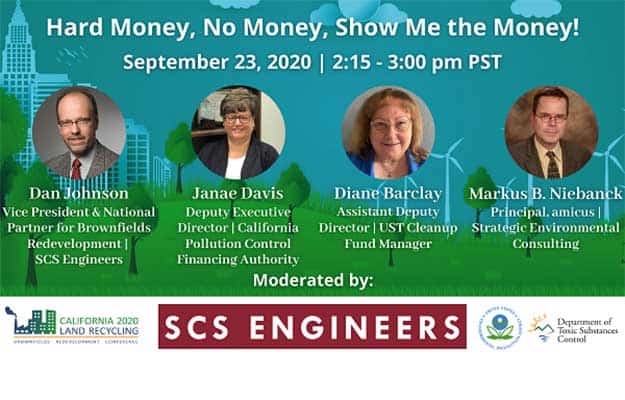
Brownfields, particularly those in urban infill areas, can be successfully redeveloped into housing and other productive uses with significant benefits to the surrounding communities. Redeveloping brownfields is also an important strategy in addressing California’s affordable housing crisis.
However, funding for brownfield redevelopment falls well short of the need, which is exacerbated by the COVID-19 pandemic and resulting impacts on budgets. But there is hope. Proposed legislation and budget requests for new sources of funding for brownfield redevelopment are proposed in excess of $100M. These policy shifts and resulting funding would make a big difference.
At the upcoming California Land Recycling Conference, several experts from the public and private sectors will share their insights and the latest information about these potential funding sources and opportunities for affordable housing and infill sites in California.
Moderated by Dan Johnson, Vice President & National Partner for Brownfield Redevelopment at SCS Engineers, the panelists are:
The conference is scheduled for Sept. 22-24, 2020. To join this interactive session, Sept. 23 from 2:15 to 3:00 PST, register at https://bit.ly/2FoWI89. Non-profit and student tickets are $25, government tickets are $50, and General Admission is $75.

In lieu of the 2020 Joint Solid Waste and Recycling Conference scheduled for October 28-30, SWANA is offering educational sessions as a webinar series with CEUs available from August through November. Register for just a few or pay one flat fee to participate in as many as you would like.
This week’s Webinar is on Thursday, September 10 at 10:00 am ET, 1 CEU.
Webinar Schedule and Registration
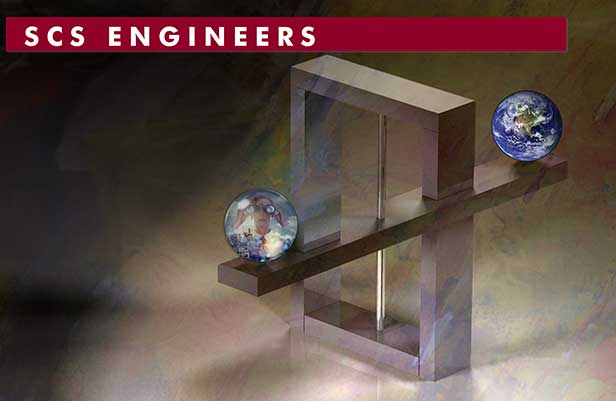
…it’s like balancing a chemical equation to get the right answer.
SCS Engineers works with insurance firms, and we understand the insurance industry’s involvement in environmental and engineering projects. Our professional staff, located according to their knowledge of regional and local geography, regulatory policies, and industrial or scientific specialty, are available nationwide. SCS professionals are sought after as technical experts, admitted as expert witnesses, and support legal counsel in a variety of environmental and regulatory litigation matters.
Rising to meet the needs of insurance companies, SCS has the resources and professionals to assist commercial, industrial and municipal clients with a wide range of environmental and engineering issues and scenarios that can occur in the course of business operations. As a result, SCS also assists clients who have the need for, and exposure to, environmental insurance policies, assisting with coverage-related matters and claims. For our engineering and environmental clients, SCS has the depth of insurance experience and technical expertise to provide the guidance needed to help with environmental claims and can act as a liaison to facilitate a more straightforward claim process.
Environmental insurance can cover regulatory agency-required cleanups, bodily injury, property damage, and associated legal expenses that may result from a contamination event. Contamination and the mitigation process are expensive, often more expensive than prevention. Contamination is usually accidental, such as a spill, but may transpire over time or be a pre-existing condition. Environmental insurance protects companies by covering the expense of assessing contamination and performing remediation, thus restoring the environment and helping to keep the business operating safely. Our experience includes a wide range of environmental claim scenarios (i.e. gasoline/service stations, transportation accidents, the oil and gas industry, manufacturing and industrial facilities, asbestos, mold), which dovetails extremely well with SCS’s own numerous business sectors.
The 5 W’s of Environmental Insurance
SCS Engineers Environmental Insurance Services and Case/Claim Studies

If you want to know how to lead a company in a downturn…listen to this podcast from Oilfield 360 Media as David de Roode and Josh Lowrey interview Gabriel Rio, President, and CEO of Milestone Environmental Services.
Gabriel explains oilfield waste, how it is regulated, and managed, along with some of the better practices evolving in environmental waste consulting.
I have known Gabriel since his early days at R360 when he found my presentation at the International Petroleum and Environmental Conference (IPEC), regarding evaporation ponds; I believe it was 2010. He invited me to stop by his office in Houston, which I did while presenting at the Produced Water Society’s annual conference in Nassau Bay that year. I worked with Gabriel for several years and into the start of when Waste Connections bought R360. He has some useful insights and knowledge of the oilfield waste industry, what is happening now, and what they are doing to weather the current 2020 pandemic storm. Part of the discussion is about carbon sequestration and oil field waste. – Neil Nowak, SCS Engineers, Oil & Gas Exploration and Production
Oil & Gas Exploration and Production